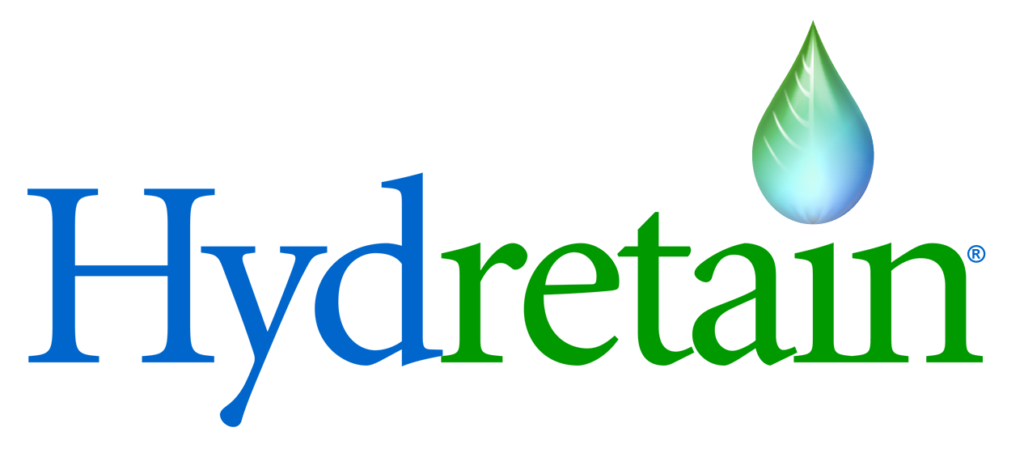FAQs
Below find a list of the top Frequently Asked Questions (FAQ). Is there something additional that you would like to ask us? If so please submit your question at the bottom of this page.
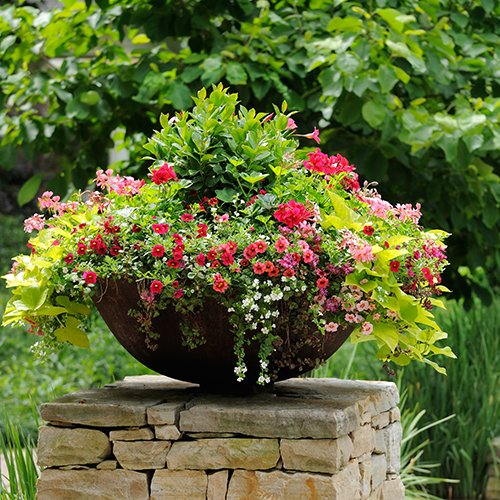
General Hydretain FAQ's
Hydretain is a unique root zone moisture management technology that reduces the need for watering turfgrasses, ornamental plants, shrubs, trees, and agriculture by as much as 50% or more. Hydretain ingredients include 54% plant based sugar alcohols, polysaccharides, and neutral salts of alpha-hydroxypropionic acid, 10% non-ionic surfactant, and 36% inert ingredients.
Once applied and watered into the root zone, Hydretain’s hygroscopic humectant components attached to the root hairs of plants and lawns, drawing moisture vapor from the soil like tiny water magnets. It then converts that moisture vapor into water droplets, enabling plants to take up more moisture and assisting in the uptake of nutrients.
Hydretain is available in both liquid and granular formulas. Liquid can be applied by spray, drench, fertigation or injection. Granular products can be applied to existing landscapes using any standard spreader equipment. For new installs granular may be incorporated into the soil at planting or applied topically after planting. Hydretain must be watered into the root zone to be effective.
Hydretain can be applied anytime during a plants life cycle. However, the best time to apply Hydretain is before hot dry weather or drought stress conditions set in.
Hydretain can be used on all types of plants including turfgrasses, flowering plants, trees, shrubs, and vegetable gardens. It may be used in landscapes and containers – both indoors and out. Hydretain can be used to reduce water stress at germination, installation and throughout lifelong maintenance.
With over 20 years of commercial use in the sport turf, lawn care and plant product industries, Hydretain is now available for DIY homeowners.
Yes. Hydretain has been used by professional interiorscapers for years and is safe for homeowners to use on container plants.
Hydertain and Water Usage
No. Hydretain has little moisture holding capacity. It does not swell and hold excess moisture like water absorbing crystals. It functions by collecting and condensing otherwise unavailable soil humidity into plant usable water droplets for root absorption.
Hydretain may wash through the soil if heavy rainfall follows closely after application before Hydretain has time to attach to plant roots. Hydretain is usually drawn up against roots within the first one to 2 required waterings after application.
Liquid Hydretain needs to be watered in right after application so that it is driven down to and throughout the root zone where it can be drawn up against tiny roots. If allowed to remain on the surface or within the thatch area Hydretain will attach to organic materials i.e. plant tissue or thatch, and its migration into the root area, with subsequent waterings, will be too slow to show it’s full efficacy.
No Hydretain is not a plant food ingredient and is not a replacement for fertilizer. However, Hydretain’s soil moisture management function has shown to improve nutrient uptake thereby amplifying fertilizer applications.
From installation to maintenance, Hydretain is an excellent tool to minimize wilt and keep potted plants and hanging baskets healthy with less water
Although Hydretain is not certified organic, it is produced using primarily food grade, organic-based hygroscopic and humectant ingredients. Hydretain ES Plus has been certified as 93% biobased by the United States Department of Agriculture BioPreferred Program. It is safe to use on commercially grown food producing agriculture as well as residential vegetable and herb gardens, fruits and citrus trees. Hydretain Granular OC incorporates the Hydretain formula into an organic compost carrier.
Yes. Hydretain products are safe for use around people and pets. Hydretain is not classified as hazardous under the Globally Harmonized System of Classification and Labelling of Chemicals. It does not require any wait period before people and pets can enter the application area.
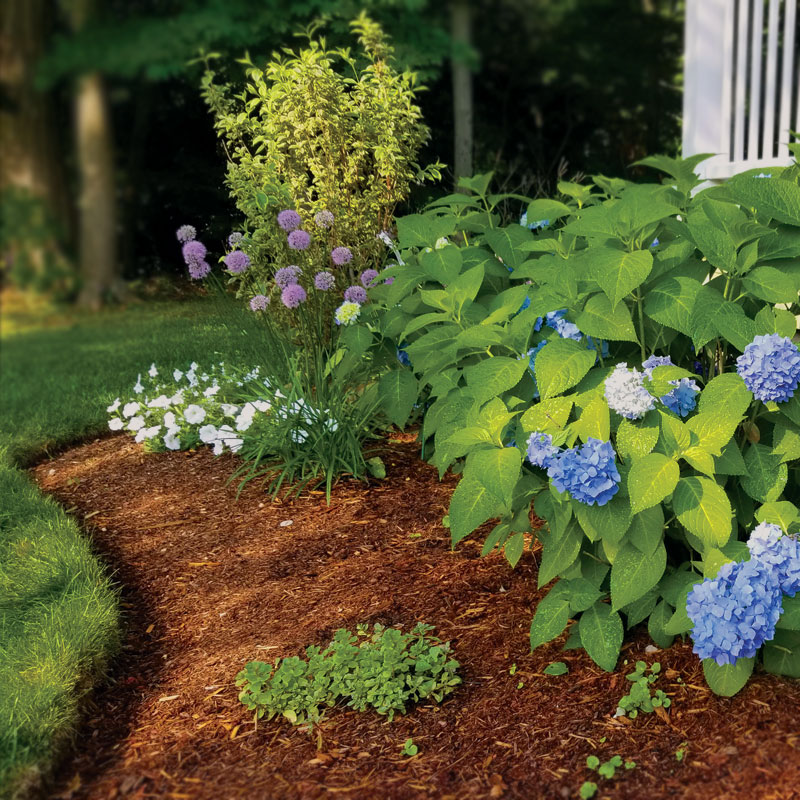
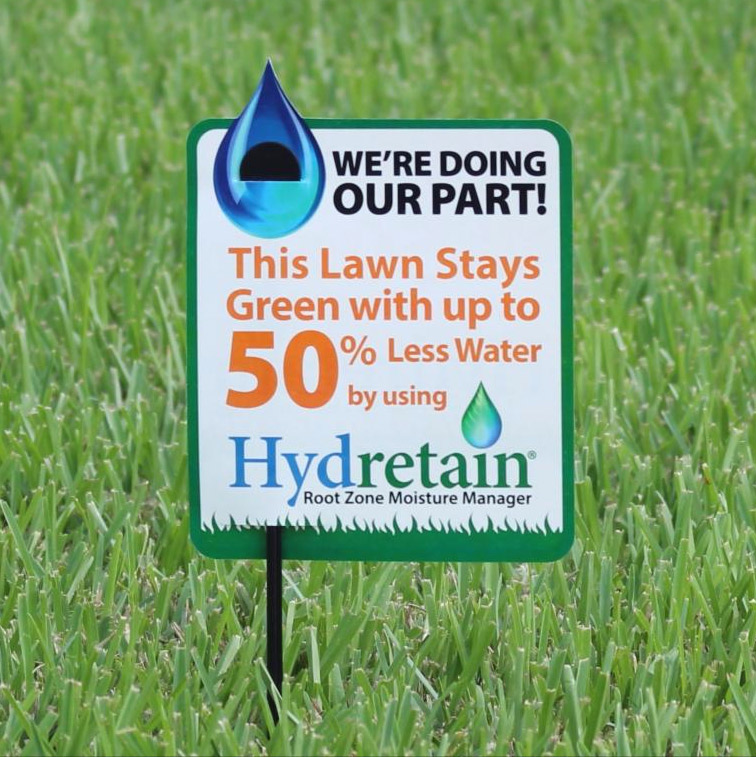
Hydretain Applications
For both liquid and granular products, each application of Hydretain lasts for up to 3 months.
Hydretain will not burn turfgrasses; however, it needs to be watered in immediately to drive the active ingredients down to the rootzone where they are designed to function. If it dries on the leaf tissue or in the thatch layer it will not be effective.
No. Wetting agents reduce the surface tension of water, which helps water enter hydrophobic soils more easily. They impact the movement of liquid water down to and throughout the soil. Hydretain is unique in its ability to impact the movement of moisture vapor as it moves back up through the soil where it would normally be lost to evaporation. Hydretain attracts soil moisture vapor and converts it back into plant usable water droplets – reducing evaporative loss and making more water available to plant roots. Super-absorbent polymers or hydrogels are similar to the polymers used in baby diapers. They absorb and store liquid water. In most cases, super-absorbent polymers must be incorporated into the root zone, making them difficult to use on established plants.
For turfgrasses, Hydretain should be applied at the following rates:
- Liquid: 9 oz / 1,000 sq. ft. For greens and tees, it is recommended to start at the full rate and then apply a monthly booster application at 1/3 rate (3 oz / 1,000 sq. ft.) throughout the rest of the season.
- Granular: 2.7 lbs / 1,000 sq. ft.
Yes. Hydretain can by applied via fertigation. The rates may be split to microdose Hydretain up to the full rate over a two week time period. If Hydretain is being used to address poor irrigation coverage, fertigation is not recommended.
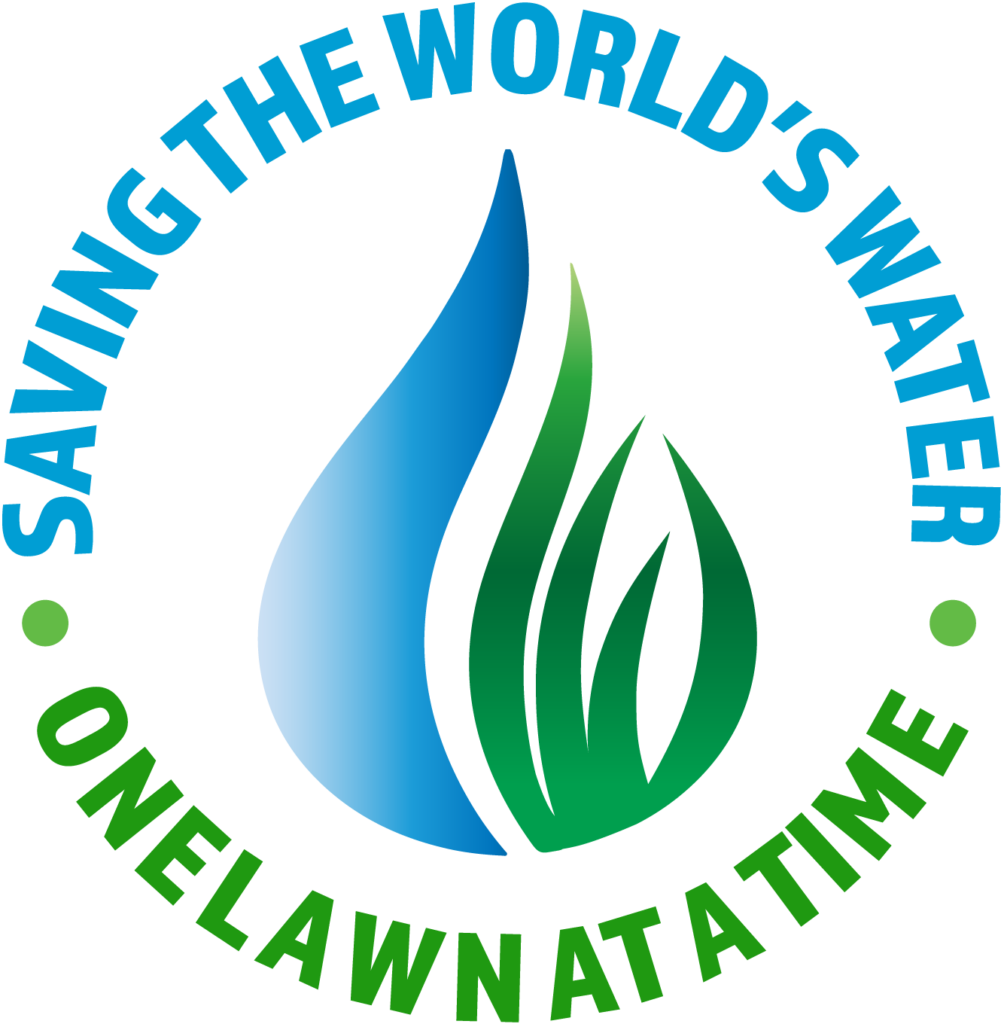
Additional Hydretain Details
Hydretain is a unique root zone moisture management technology that reduces the need for watering turfgrasses, ornamental plants, shrubs, trees, and agriculture by as much as 50% or more. Hydretain ingredients include 54% plant based sugar alcohols, polysaccharides, and neutral salts of alpha-hydroxypropionic acid, 10% non-ionic surfactant, and 36% inert ingredients.
Once applied and watered into the root zone, Hydretain’s hygroscopic humectant components attached to the root hairs of plants and lawns, drawing moisture vapor from the soil like tiny water magnets. It then converts that moisture vapor into water droplets, enabling plants to take up more moisture and assisting in the uptake of nutrients.
Hydretain is available in both liquid and granular formulas. Liquid can be applied by spray, drench, fertigation or injection. Granular products can be applied to existing landscapes using any standard spreader equipment. For new installs granular may be incorporated into the soil at planting or applied topically after planting. Hydretain must be watered into the root zone to be effective.
Hydretain can be applied anytime during a plants life cycle. However, the best time to apply Hydretain is before hot dry weather or drought stress conditions set in.
Hydretain can be used on all types of plants including turfgrasses, flowering plants, trees, shrubs, and vegetable gardens. It may be used in landscapes and containers – both indoors and out. Hydretain can be used to reduce water stress at germination, installation and throughout lifelong maintenance.
With over 20 years of commercial use in the sport turf, lawn care and plant product industries, Hydretain is now available for DIY homeowners.
Yes. Hydretain has been used by professional interiorscapers for years and is safe for homeowners to use on container plants.
No. Hydretain has little moisture holding capacity. It does not swell and hold excess moisture like water absorbing crystals. It functions by collecting and condensing otherwise unavailable soil humidity into plant usable water droplets for root absorption.
Hydretain may wash through the soil if heavy rainfall follows closely after application before Hydretain has time to attach to plant roots. Hydretain is usually drawn up against roots within the first one to 2 required waterings after application.
Liquid Hydretain needs to be watered in right after application so that it is driven down to and throughout the root zone where it can be drawn up against tiny roots. If allowed to remain on the surface or within the thatch area Hydretain will attach to organic materials i.e. plant tissue or thatch, and its migration into the root area, with subsequent waterings, will be too slow to show it’s full efficacy.
No Hydretain is not a plant food ingredient and is not a replacement for fertilizer. However, Hydretain’s soil moisture management function has shown to improve nutrient uptake thereby amplifying fertilizer applications.
From installation to maintenance, Hydretain is an excellent tool to minimize wilt and keep potted plants and hanging baskets healthy with less water
Although Hydretain is not certified organic, it is produced using primarily food grade, organic-based hygroscopic and humectant ingredients. Hydretain ES Plus has been certified as 93% biobased by the United States Department of Agriculture BioPreferred Program. It is safe to use on commercially grown food producing agriculture as well as residential vegetable and herb gardens, fruits and citrus trees. Hydretain Granular OC incorporates the Hydretain formula into an organic compost carrier.
Yes. Hydretain products are safe for use around people and pets. Hydretain is not classified as hazardous under the Globally Harmonized System of Classification and Labelling of Chemicals. It does not require any wait period before people and pets can enter the application area.
For both liquid and granular products, each application of Hydretain lasts for up to 3 months.
Hydretain will not burn turfgrasses; however, it needs to be watered in immediately to drive the active ingredients down to the rootzone where they are designed to function. If it dries on the leaf tissue or in the thatch layer it will not be effective.
No. Wetting agents reduce the surface tension of water, which helps water enter hydrophobic soils more easily. They impact the movement of liquid water down to and throughout the soil. Hydretain is unique in its ability to impact the movement of moisture vapor as it moves back up through the soil where it would normally be lost to evaporation. Hydretain attracts soil moisture vapor and converts it back into plant usable water droplets – reducing evaporative loss and making more water available to plant roots. Superabsorbent polymers or hydrogels are similar to the polymers used in baby diapers. They absorb and store liquid water. In most cases, superabsorbent polymers must be incorporated into the root zone, making them difficult to use on established plants.
For turfgrasses, Hydretain should be applied at the following rates:
- Liquid: 9 oz / 1,000 sq. ft. For greens and tees, it is recommended to start at the full rate and then apply a monthly booster application at 1/3 rate (3 oz / 1,000 sq. ft.) throughout the rest of the season.
- Granular: 2.7 lbs / 1,000 sq. ft.
Yes. Hydretain can by applied via fertigation. The rates may be split to microdose Hydretain up to the full rate over a two week time period. If Hydretain is being used to address poor irrigation coverage, fertigation is not recommended.
Optional layout wo image
Hydretain is a unique root zone moisture management technology that reduces the need for watering turfgrasses, ornamental plants, shrubs, trees, and agriculture by as much as 50% or more. Hydretain ingredients include 54% plant based sugar alcohols, polysaccharides, and neutral salts of alpha-hydroxypropionic acid, 10% non-ionic surfactant, and 36% inert ingredients.
Once applied and watered into the root zone, Hydretain’s hygroscopic humectant components attached to the root hairs of plants and lawns, drawing moisture vapor from the soil like tiny water magnets. It then converts that moisture vapor into water droplets, enabling plants to take up more moisture and assisting in the uptake of nutrients.
Hydretain is available in both liquid and granular formulas. Liquid can be applied by spray, drench, fertigation or injection. Granular products can be applied to existing landscapes using any standard spreader equipment. For new installs granular may be incorporated into the soil at planting or applied topically after planting. Hydretain must be watered into the root zone to be effective.
Hydretain can be applied anytime during a plants life cycle. However, the best time to apply Hydretain is before hot dry weather or drought stress conditions set in.
Hydretain can be used on all types of plants including turfgrasses, flowering plants, trees, shrubs, and vegetable gardens. It may be used in landscapes and containers – both indoors and out. Hydretain can be used to reduce water stress at germination, installation and throughout lifelong maintenance.
With over 20 years of commercial use in the sport turf, lawn care and plant product industries, Hydretain is now available for DIY homeowners.
Yes. Hydretain has been used by professional interiorscapers for years and is safe for homeowners to use on container plants.
No. Hydretain has little moisture holding capacity. It does not swell and hold excess moisture like water absorbing crystals. It functions by collecting and condensing otherwise unavailable soil humidity into plant usable water droplets for root absorption.
Hydretain may wash through the soil if heavy rainfall follows closely after application before Hydretain has time to attach to plant roots. Hydretain is usually drawn up against roots within the first one to 2 required waterings after application.
Liquid Hydretain needs to be watered in right after application so that it is driven down to and throughout the root zone where it can be drawn up against tiny roots. If allowed to remain on the surface or within the thatch area Hydretain will attach to organic materials i.e. plant tissue or thatch, and its migration into the root area, with subsequent waterings, will be too slow to show it’s full efficacy.
No Hydretain is not a plant food ingredient and is not a replacement for fertilizer. However, Hydretain’s soil moisture management function has shown to improve nutrient uptake thereby amplifying fertilizer applications.
From installation to maintenance, Hydretain is an excellent tool to minimize wilt and keep potted plants and hanging baskets healthy with less water
Although Hydretain is not certified organic, it is produced using primarily food grade, organic-based hygroscopic and humectant ingredients. Hydretain ES Plus has been certified as 93% biobased by the United States Department of Agriculture BioPreferred Program. It is safe to use on commercially grown food producing agriculture as well as residential vegetable and herb gardens, fruits and citrus trees. Hydretain Granular OC incorporates the Hydretain formula into an organic compost carrier.
Yes. Hydretain products are safe for use around people and pets. Hydretain is not classified as hazardous under the Globally Harmonized System of Classification and Labelling of Chemicals. It does not require any wait period before people and pets can enter the application area.
For both liquid and granular products, each application of Hydretain lasts for up to 3 months.
Hydretain will not burn turfgrasses; however, it needs to be watered in immediately to drive the active ingredients down to the rootzone where they are designed to function. If it dries on the leaf tissue or in the thatch layer it will not be effective.
No. Wetting agents reduce the surface tension of water, which helps water enter hydrophobic soils more easily. They impact the movement of liquid water down to and throughout the soil. Hydretain is unique in its ability to impact the movement of moisture vapor as it moves back up through the soil where it would normally be lost to evaporation. Hydretain attracts soil moisture vapor and converts it back into plant usable water droplets – reducing evaporative loss and making more water available to plant roots. Superabsorbent polymers or hydrogels are similar to the polymers used in baby diapers. They absorb and store liquid water. In most cases, superabsorbent polymers must be incorporated into the root zone, making them difficult to use on established plants.
For turfgrasses, Hydretain should be applied at the following rates:
- Liquid: 9 oz / 1,000 sq. ft. For greens and tees, it is recommended to start at the full rate and then apply a monthly booster application at 1/3 rate (3 oz / 1,000 sq. ft.) throughout the rest of the season.
- Granular: 2.7 lbs / 1,000 sq. ft.
Yes. Hydretain can by applied via fertigation. The rates may be split to microdose Hydretain up to the full rate over a two week time period. If Hydretain is being used to address poor irrigation coverage, fertigation is not recommended.
Have Questions Not Answered Here?
Submit the form below and we will get back to you shortly.
